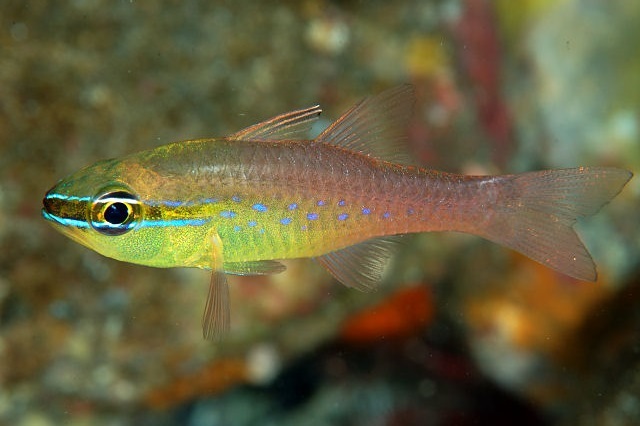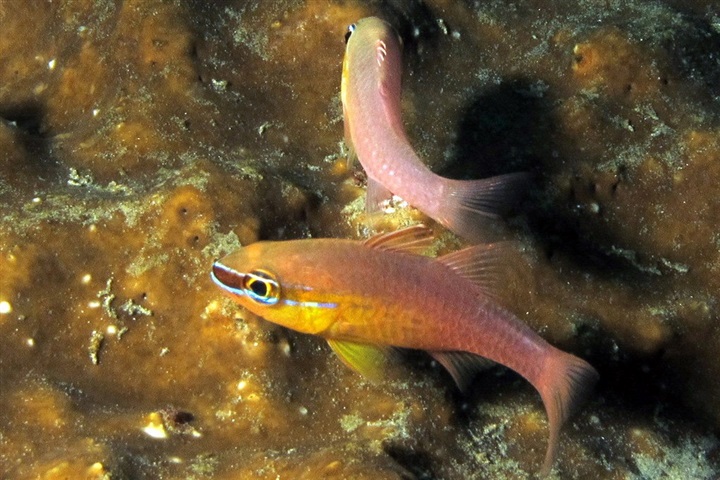Ostorhinchus apogonoides


| Latin name | Ostorhinchus apogonoides - (Bleeker, 1856) |
|---|---|
| Local name | Short-tooth cardinal |
| Family | Apogonidae - Ostorhinchus |
| Origin | East Indian Ocean, West Indian Ocean, Australia, Japan, The Red Sea, Indonesia, Central/West Pacific |
| Max length | 10 cm (3.9") |
| Minimum volume |
100 l (26 gal) |
|---|---|
| Hardiness |
Hardy |
| Suitable for aquarium |
Suitable for most aquarium |
| Reef safe |
Reef safe with caution |
| Aggressiveness | Docile but might be aggressive towards similar species |
| Recommended |
Small crustaceans (Krill, mysis, artemia...) |
|---|---|
| Mostly |
Larger crustaceans (Shrimp, crabs...) |
This species may eat small fish and especially small shrimps, there are, however, some aquarists who manage to get them to coexist just fine.
These fish flourish better without other members of the same species in the aquarium.
This species needs good hiding places, for example, between live rocks.
This species is very shy and docile, so one should be careful when keeping it with more aggressive fish.
Cardinalfish come in many different shapes and colours, generally they are well suited for aquaria.
Cardinalfish have a large mouth and a big appetite, take this into account with feeding the other fish. These fish typically live off of Artemia, Mysis and krill. In the aquarium they will eat anything they can.
They will sometimes eat small shrimps and fish, so do be aware of this, but it is not normally a problem.
It is possible to keep several species together, if space allows. Some species will form small shoals. They are normally peaceful towards other fish, but will sometimes fight among themselves if there isn't sufficient space or food.
Many species are nocturnal and will therefore often seek a hiding place during the day. This can be between stones, SPS corals and, in some cases, in an anemone and between spines of Sea urchins.
Cardinalfish are a good choice if ones wishes to attempt to start a breeding tank.
| Aquarium trade | No |
|---|---|
| Distribution | Indo-West Pacific: East Africa to the Philippines (Ref. 559), north to Miyakejima, Japan (Ref. 559) and Taiwan (Ref. 9147), south to northern Australia (Ref. 2334) and Society Islands (Ref. 76833). |
| English common names |
Short-toothed cardinalfish Goldbelly cardinalfish |
| French common names |
Apogon à ventre doré Cardinal masqué Poisson cardinal |
Scott W. Michael. 2001. Basslets, Dottybacks & Hawkfishes: v. 2 (Reef Fishes) - TFH Publications / Microcosm Ltd. - (English)
Bob Fenner. Cardinalfishes, Family Apogonidae, Pt. 1, Pt. 2 - Wet Web Media - (English)

